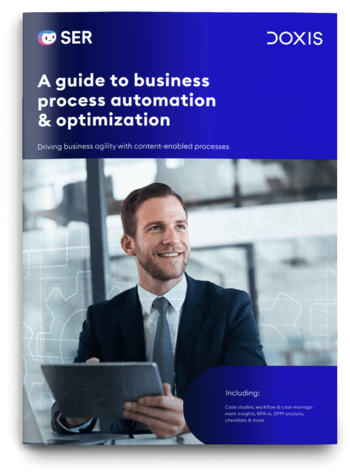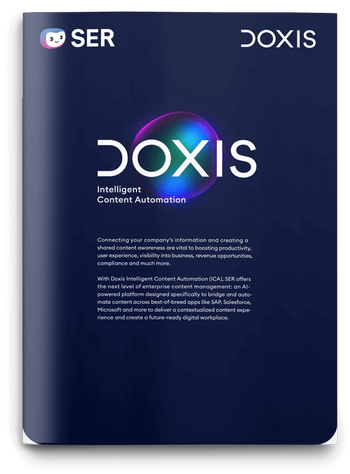SER Blog Customer Stories & Use Cases
Maverick buying – how purchasing can regain control
In procurement management, maverick buying is a widespread phenomenon, and this “wild” approach to purchasing can have serious consequences for a business: When employees make unauthorized purchases, they ignore the purchasing department’s strategic plans. This results in a high level of inefficiency and increased risks in purchasing.
In this article, we show how businesses can use standardized workflows to curb the maverick buying effect and regain control by implementing digital purchasing processes.

What is maverick buying?
In procurement management, the term maverick buying refers to the purchase of goods and services outside of standardized channels. This means that employees carry out transactions on their own without involving the purchasing department. For this reason, maverick buying is also known as “wild” or “rogue” purchasing.
Rogue buyers can be divided into three types:
- Type 1: Buys goods or services without consulting purchasing.
- Type 2: Consults with purchasing too late in the process.
- Type 3: Employees bypass formal processes such as framework agreements, approval procedures, or policies.
What causes maverick buying?
Maverick buying happens when employees are not sufficiently informed about procurement processes and policies, or there are no standardized procedures.
Lack of knowledge about policies and procedures
If employees are unfamiliar with their own company's procurement channels, this can lead to ambiguity in the process. A lack of policies and changing approval processes form stumbling blocks that can lead to improper transactions in the purchasing process.
Bypassing formal processes
With maverick buying, employees sidestep any overly complex or poorly defined purchasing processes. For example, if requirements need to be met quickly, employees may bypass the formal process and act on their own. The reason is simple: they believe their way is faster than going through purchasing.
Lack of understanding of existing procurement systems
In summary, the cause of maverick buying is rooted in employees’ lack of understanding. On the one hand, employees do not know the correct procurement procedure because they haven't been trained. On the other hand, they do not understand the importance of compliant purchasing behavior.
Risks for businesses
The result of maverick buying is inefficient procurement processes. These can be found in the following:
- Uncalculated expenses
- Hidden costs and budget overruns
- Lack of transparency in the procurement process
- A weakened position in contract negotiations
- Selecting suppliers that provide low quality
- Corruption risks due to kick-back payments
The damage to businesses is significant. Alongside the added costs, there is a risk of reputational damage and compliance problems. For example, selecting the wrong supplier could mean a breach of the Supply Chain Act, in the event that the supplier is not certified. Even partners to framework agreements dislike orders placed outside the negotiated basis.
In other words, to prevent damages, purchasing has to regain control over buying processes.
Optimizing the procurement process
To put this into practice properly, you need to have well-defined policies and workflows.
Optimizing purchasing processes begins with training your employees. Only employees who understand the purchasing processes can actually change their behavior. In this context, increased transparency is provided by digital procurement solutions that employees from specialist departments and purchasing use in parallel.
This enables procurement management to keep an overview of all processes, while employees continue to initiate purchasing processes independently – not in the “wild” rather following policies.

Business process automation & optimization guide
Our in-depth guide provides actionable recommendations, case studies & checklists to help you achieve process digitalization.
Read nowHow procurement works best
An optimized procurement process means that purchasing has full control – at any time in the workflow:
- Requirements planning: When employees in a business identify a need, they send a purchase requisition (PReq) to the purchasing department. In an approval step, purchasing then approves the purchase order.
- Supplier selection and quotes: As part of strategic supplier management, businesses get quotes from suppliers certified by the purchasing department. Contracts are negotiated with the supplier that provides the best quote.
- Purchase order and order confirmation: Once the goods or services are ordered, businesses receive an order confirmation. This enables you to compare against the goods ordered. Systems monitor the purchase order and document the purchase history.
- Incoming goods: Only when the purchase order has been checked for quality and completeness does the accounting department record it in the system. If everything is correct, the goods are forwarded internally to the specific department.
- Payments processing: The procurement process ends with payment for the goods.
This also simplifies purchase orders for employees. After the purchase requisition, the process is largely automatic.
The role of Intelligent Content Automation (ICA)
When procurement runs smoothly, systems and responsibilities mesh, ensuring fast and secure processes on one platform. The solution: Intelligent Content Automation.
Enterprise content management systems (ECM) remove sources of loss lying dormant in purchase-to-pay (P2P) processes. They centralize end-to-end procurement processes in one system, resulting in a purchasing process that is transparent and traceable.
Automated approval workflows in purchase-to-pay automation systems reduce the risk of maverick buying. Not least because ECM systems make compliance with policies and regulations mandatory. This ensures the purchasing process is designed to be compliant and efficient.
Intelligent Content Automation with Doxis
With Doxis you can map the entire process in one solution – from order confirmation to invoice processing. Doxis minimizes media disruptions and sets enterprise-wide standards that promote lean processes.
Use Doxis for the end-to-end procurement process, including all of your solutions:
- Automation of order confirmations: Doxis captures order confirmations, checks them against purchase order and supplier data, and archives the order confirmations in an audit-proof manner.
- Contract lifecycle management: Automate and standardize contract management from creation to deletion, taking into account retention and deletion periods.
- SmartBridge for SAP: Integrate SAP in your ECM system and create traceable, end-to-end processes. For you and your business partners.
- Digital supplier records: Get a 360-degree view of orders, suppliers, and deliveries with the supplier eFile, and accelerate purchasing processes using automated workflows and optimized process quality.
- Intelligent invoice automation: With Doxis, invoice workflows are expedited and error-free. Daily liquidity planning and optimization potential increase profitability.

Doxis Intelligent Content Automation
With Doxis Intelligent Content Automation SER offers the next level of enterprise content management.
Read nowStandardized procurement processes curb maverick buying
Maverick buying can have serious consequences for a business. The reasons why employees purchase goods and services in the “wild” often include inefficient, poorly designed processes and the lack of clear information.
Digital solutions such as the Doxis Intelligent Purchase-to-Pay Automation suite map procurement processes in enterprise-wide standardized workflows. This increases control over purchasing activities, creates transparent procurement channels, and accelerates end-to-end workflows thanks to automation.
FAQs about maverick buying
The latest digitization trends, laws and guidelines, and helpful tips straight to your inbox: Subscribe to our newsletter.
How can we help you?
+49 (0) 30 498582-0Your message has reached us!
We appreciate your interest and will get back to you shortly.




